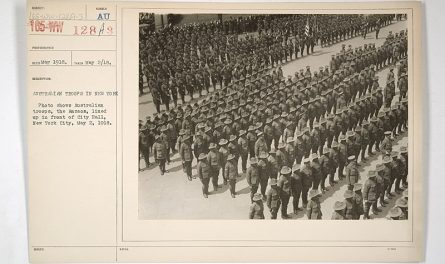

Recruits at Mitcham Camp, 1916 image courtesy State Library of SA B-41848
Mitcham Army Camp
It was in April 1915 when a model garden suburb in the area was still on the drawing board, that the army established Mitcham Camp on the three hundred acre Grange Farm owned by the Mortlock family.
When Australia first entered WW1, a flood of enthusiastic young men enlisted to “do their bit for their country” in a rush of nationalistic fervour. The Mitcham camp was established after the first camp at Morphettville became overcrowded. Troops from the 27th Battalion marched into Mitcham Camp on 1 April 1915 and the area was soon a sea of tents swarming with thousands of enthusiastic new enlistees.
The camp accommodated over 4,000 soldiers training for up to 12 weeks. Field patrols, bayonet fighting, bomb throwing and trench digging were all part of routine training at the camp. The Light Horse camped and cared for their horses near what is now the eastern end of Prince George Parade.
Camp headquarters were initially in the old four roomed Grange farmhouse. By 1916 Mitcham Camp resembled a large mining town with rows of neat galvanised iron huts, a hospital, camp HQ, a large recreation building run by the YMCA, a Post Office, bank agency, barbers, and religious facilities for many denominations. Sealed roads were named after Adelaide’s main city streets.
Soldiers regularly marched up Wattlebury Road on training. When the troops assembled at Mitcham Station for embarkation from Outer Harbour, the local community gave them a rousing farewell. Some camp activities were not quite so popular with the locals though. On February 14, 1916 The Advertiser reported that residents from surrounding suburbs were startled by loud explosions as soldiers practised live bomb throwing under simulated war conditions.
Local resident Ron Lugg recalled his excitement at passing the camp regularly as a boy, eagerly awaiting his 18th birthday when he could enlist. Many of the former students from the Brownhill Creek and Mitcham Primary schools who enlisted, trained at Mitcham Camp. By early 1918, training on home grounds ceased with troops dispatched for training in Egypt or England as soon as a ship became available.
information from http://www.mitchamcouncil.sa.gov.au/mitchamarmycamp


